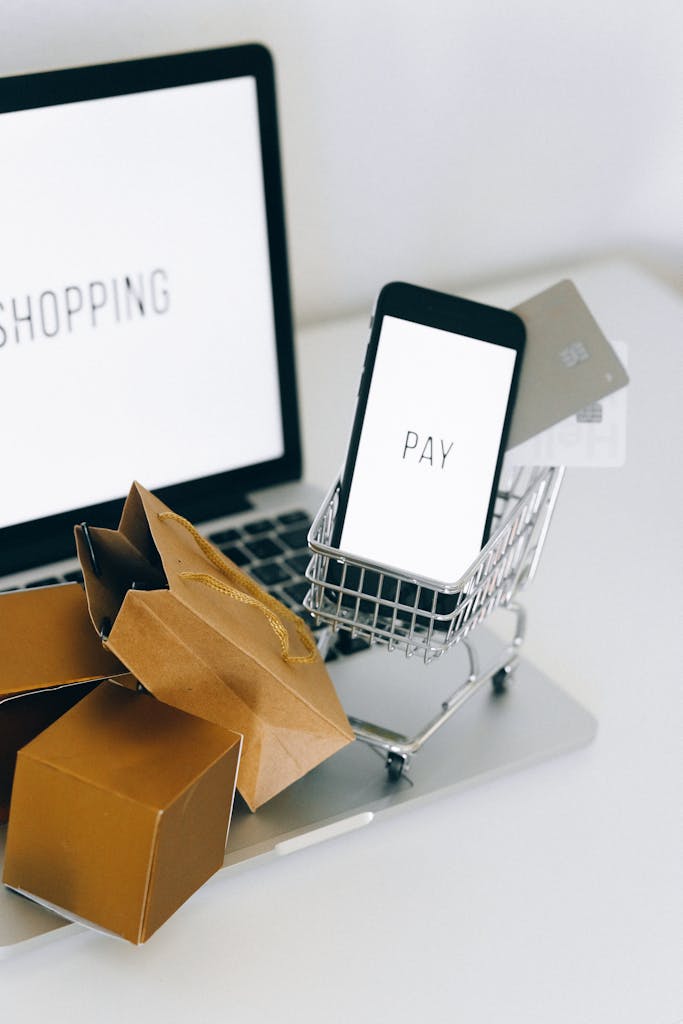
Black Friday’s approaching fast, and if you’re like me, you’re probably already fantasizing about those killer deals while simultaneously panicking about your bank account. Last year, I walked into Target with a $200 budget and somehow walked out $350 poorer – apparently, those “limited time” signs have magical powers over my wallet. But here’s the thing: with the right game plan, you can actually score amazing deals without the post-shopping financial regret that haunts you until Valentine’s Day.
Key Takeaways
- Set a realistic budget by reviewing last year’s spending and allocating 60% for gifts, 20% for personal purchases, and 20% for travel.
- Create a detailed shopping list prioritizing must-have items (70% of budget), nice-to-have items (25%), and impulse purchases (5%).
- Research prices beforehand using comparison tools like Honey and CamelCamelCamel to identify genuine deals and avoid overpaying.
- Use cash or debit cards instead of credit to spend 12-18% less and avoid post-holiday debt accumulation.
- Strategically leverage credit card rewards and cashback opportunities while installing browser extensions to automatically find coupons and discounts.
Set a Realistic Budget Before You Shop
Before you even think about stepping foot in a store or clicking “add to cart,” you need to set a realistic budget that won’t leave you eating ramen noodles until Valentine’s Day. Start by reviewing last year’s holiday spending—trust me, those credit cards statements don’t lie.
With the average consumer planning to spend $943 this year, according to the National Retail Federation, you’ll want to create your own number that actually works for your wallet. Break down your budget into categories: 60% for gifts, 20% for personal purchases, and 20% for travel and entertainment.
Write a detailed shopping list with specific dollar amounts for each person. This strategy helps you avoid impulse purchases that’ll haunt your January budget. Creating a proper budget plan is like developing financial projections for your holiday spending—it gives you clear direction and helps ensure your personal finances stay on track through the season.
Create a Detailed Shopping List and Stick to It
Once you’ve set your budget, you’ll need to create a shopping list that’s organized by priority level – think must-have gifts first, nice-to-have items second, and those “wow, that’s shiny” impulse buys dead last. I learned this the hard way after spending $200 on random electronics I didn’t need, while forgetting my nephew’s birthday gift entirely.
Your list becomes your shopping GPS, so check it frequently to track your progress and avoid those sneaky impulse purchases that somehow jump into your cart when you’re not looking. Just like businesses use SMART goals to stay focused and measure success, your prioritized shopping list keeps you accountable to your Black Friday spending objectives.
Categorize by Priority Level
When I first started Black Friday shopping, I’d wander around stores like a kid in a candy shop, grabbing whatever caught my eye and wondering why my bank account looked so sad afterward. Now I create a clear list with three power categories that keep me in control.
First, must-have items get 70% of what I’m willing to spend. These are essentials like my daughter’s winter boots or replacing our broken coffee maker. Nice-to-have items get 25% – maybe that fancy air fryer I’ve been eyeing. Impulse purchases get the remaining 5%, because let’s be honest, you’ll find something tempting.
This system helps you prioritize must-have purchases while staying within your budget and stick to your financial goals. You’ll shop with purpose, not desperation.
Avoid Impulse Purchases
Having those priority categories means nothing if you walk into Target with a vague mental list and somehow leave with a cart full of scented candles you didn’t know you needed. Your plan to shop successfully hinges on creating a detailed, written list before stepping foot in any store during the holiday season.
I’m talking specifics here – not “kitchen stuff” but “KitchenAid stand mixer, model KSM150, red.” When you stay focused on exact items, you’ll resist those flashy endcaps screaming “50% off!” Research prices beforehand using comparison apps, so you’ll recognize genuine deals versus marketing tricks.
Set a timer for each store section, giving yourself permission to reassess before checkout. This simple pause prevents most impulse purchases and keeps you in control of your spending power.
Track List Progress
Your shopping list becomes your financial lifeline the moment you enter that chaotic Black Friday battlefield, but only if you actually use it like the powerful tool it is. Don’t just stuff that list in your pocket and forget about it – actively track progress throughout your shopping journey. Cross off each item as you conquer it, and write down actual prices next to your budget estimates. This keeps your spending priorities crystal clear when you’re surrounded by “limited time” temptations screaming for attention.
Check your running total every three purchases, because math gets fuzzy when adrenaline kicks in. I learned this lesson after overspending by $200 one year because I “felt” like I was on track. Your shopping list isn’t just paper – it’s your financial GPS guiding you toward victory.
Research Prices and Deals in Advance

Before you get swept up in the Black Friday frenzy and start throwing everything into your cart like you’re on a game show, take a step back and do your homework first. You’ve got the power to outsmart those sneaky retailers who jack up prices just to slash them later.
Start by checking the price history of items you want—tools like Honey and CamelCamelCamel show you if that “50% off” deal is actually legit. Read product reviews from real customers, not just the paid influencers. Install browser extensions that automatically hunt for coupons and cash-back opportunities while you shop.
Sign up for store newsletters three weeks before Black Friday. You’ll get insider access to early deals and member-only discounts that put you ahead of the crowd. Create pins showcasing your Black Friday finds and transformation stories, since pins with text overlays generate 30% more engagement and can help you monetize your deals through affiliate marketing.
Use Cash or Debit Instead of Credit Cards
Cash hits different when you’re staring at those Black Friday price tags, and I learned this lesson the hard way after racking up $800 in credit card debt during one particularly brutal shopping spree three years ago. Now I swear by cash and my debit card because they force real accountability.
Research shows you’ll spend 12-18% less with cash compared to plastic, which means serious savings power. When you hand over actual bills, your brain registers the loss immediately – no delayed credit card shock in January. Your debit card works similarly since it pulls directly from your account, preventing overspending fantasies.
Trust me, avoiding that post-holiday debt hangover is worth the minor inconvenience of counting real money. This cash-over-credit strategy perfectly demonstrates how doing well with money isn’t about complex calculations, but about understanding your own behavior patterns and making choices that work with your psychology rather than against it.
Take Advantage of Credit Card Rewards Strategically
Strategic credit card rewards can actually turn your Black Friday shopping into a money-making opportunity, and I’ve earned over $300 in cash back during past holiday seasons by playing the system smart.
Playing the credit card rewards game right has literally put hundreds of extra dollars back in my pocket every holiday season.
Those sign-up bonuses are basically free money waiting for you to claim them.
I pair my rewards card with every holiday purchase, turning necessary shopping into points that save money later. Browser extensions automatically hunt down coupons and cash back while I shop online, because who’s time to manually search?
Set price alerts on items you want, then use your card’s price matching policy when you find better deals. You’re not just spending – you’re strategically earning.
For businesses processing holiday payments, Stripe makes it easy to accept credit cards and other payment methods while keeping transaction fees competitive during high-volume shopping periods.
Stack Discounts and Use Multiple Savings Methods

Discount stacking turned my $200 Black Friday wishlist into a $87 victory last year, and honestly, it felt like I’d cracked some secret retailer code. You’ll score great deals by layering multiple savings methods like a strategic mastermind.
Start with store sales, then add coupon codes, cashback apps, and gift card discounts. I combined a 30% off sale with a $10 coupon, 5% cashback, and used a discounted gift card I’d bought for 15% off. Your credit card might offer additional rewards or price protection too.
Check if stores allow stacking manufacturer coupons with store coupons – many do during Black Friday. Track your savings in real-time; watching that total drop gives you serious shopping superpowers. Consider reinvesting your Black Friday savings into launching an online course business or other home-based venture to turn those deals into long-term income opportunities.
Shop Online to Avoid Crowds and Impulse Purchases
While my husband thinks I’m antisocial for avoiding the Black Friday stampede, shopping online has saved me roughly $300 in impulse buys over the past three years.
Online shopping gives you the power to avoid crowds and think clearly about each purchase. I can compare prices across multiple sites, read reviews, and actually stick to my list without some retail employee breathing down my neck. Plus, most retailers offer the same deals online anyway, often with free shipping.
This approach to holiday shopping helps you avoid overspending while maintaining your sanity. By distinguishing between what you actually need versus what catches your eye in the moment, you’re practicing conscious spending that keeps your financial goals on track. Trust me, your wallet will thank you.
Don’t Fall for Fake Urgency and Retail Mind Games

Three years ago, I fell for the “Only 2 left in stock!” trick and bought a $180 kitchen gadget I used exactly once. Don’t let retailers manipulate your wallet with fake urgency tactics.
Those countdown clocks and “limited-time” banners? They’re designed to bypass your rational brain and trigger panic buying.
Here’s how to stay in control: First, decide how much you’ll spend before browsing any deals. Write it down and stick to it. Second, when you see “urgent” messaging, take a deliberate 10-minute break. Walk away from your computer or phone. Third, research if retailers offer the same item at similar prices throughout the year.
The best deals aren’t worth financial stress. You’ve got the power to avoid their mind games and shop strategically. Remember that seeking validation through purchases creates unhealthy dependence—true freedom comes from self-acceptance, not external approval from having the latest deals.
Set Spending Limits for Each Person on Your Gift List
Last year, I spent $300 on my sister alone while my cousin got a $15 candle, and the guilt still haunts me during family dinners. Don’t let uneven spending destroy your Friday shopping strategy and family harmony.
Set a hard limit for each person before you start hunting for deals. I recommend $50-75 per close family member, $25-40 for friends, and $15-25 for acquaintances. Write these numbers down and stick to them religiously.
When you’re finding the best Black Friday deals, it’s tempting to spend much more than planned because everything seems like a steal. Track your spending per person on your phone to stay accountable. Quality beats quantity every time, so focus on one meaningful gift rather than multiple cheap items.
For example, within a $50-75 budget for close family, you can find great options like a portable Bluetooth speaker for $89.95 or a foam roller for $28.95, allowing room for thoughtful additions without breaking your limit.
Track Your Spending in Real-Time
You can’t manage what you don’t measure, and that’s especially true when Black Friday deals start tempting you left and right. Your mobile banking app becomes your best friend during shopping season, letting you check your account balance after every purchase so you don’t accidentally blow through your $500 holiday budget by noon.
Set up spending alerts for amounts like $100 or $200, so your phone buzzes with a reality check before you grab that “amazing” deal on something you probably don’t need. Using accounting software to track your Black Friday expenses alongside your regular income and spending gives you a complete picture of how holiday shopping affects your overall financial health.
Use Mobile Banking Apps
Mobile banking apps have become my secret weapon for surviving Black Friday without completely destroying my bank account, and honestly, I wish I’d discovered this trick years ago. You’ll gain complete control over your spending when you use mobile banking apps with real-time spending tracking features. I check my account balance before every purchase, which prevents those “oh crap” moments at checkout.
Apps like Mint and YNAB let you categorize Black Friday purchases instantly, so you’ll see exactly where your money’s going. Set up spending alerts at 75% of your Black Friday budget, and you’ll get notifications before hitting dangerous territory. This real-time visibility eliminates overspending because you can’t pretend that $200 sweater won’t impact your grocery money next week.
Set Spending Alerts
When I finally started setting up spending alerts, I realized I’d been shopping blind for years, basically throwing money around like confetti and hoping for the best.
Now you can take control of your Black Friday budget by setting smart spending alerts that actually work. Use your banking app to create category-specific thresholds—I set $200 for gifts, $100 for personal items, and $50 for random impulse buys. Your phone will buzz when you hit these limits, giving you that reality check before you swipe again.
Set up low-balance alerts too, so you know exactly when your available funds drop below $500 or whatever cushion keeps you comfortable. These alerts transform chaotic shopping into strategic spending.
Focus on Needs Over Wants to Avoid Overspending
Although those shiny “70% off” stickers can make your heart race faster than a morning espresso, the harsh truth is that 35% of Black Friday shoppers end up with stuff they never intended to buy. Your power move: create a pre-made shopping list focused strictly on needs over wants, and guard it like your debt payoff plan depends on it—because it does.
That discounted coffee maker might seem essential, but if you’ve got one at home, bypass it. Stick to genuine necessities like replacing broken home goods or items you’ve been waiting months to purchase. This laser focus can save you up to $150 and slash your impulse spending by 40%. True financial power comes from controlling your purchases, not letting flashy deals control you.
Conclusion
You’ve got the tools to conquer Black Friday without breaking the bank. Recall, retailers are counting on you to overspend, but you’re smarter than that. Stick to your list, track every purchase, and don’t let those “limited time” offers pressure you into bad decisions. Your future self will acknowledge you when January rolls around and you’re not drowning in credit card debt. Happy shopping, and may your budget survive the madness!





Leave a Reply